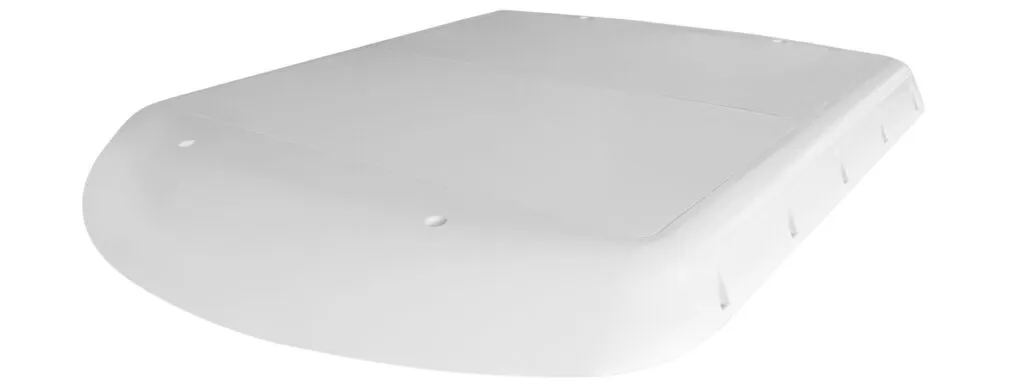Gogo goes full throttle with Galileo STCs after securing FAA PMAs
Two months after receiving Parts Manufacturer Approval (PMA) from the US Federal Aviation Administration for its Gogo Galileo half-duplex (HDX) electronically steerable antenna, Gogo has secured PMA from the FAA for the slightly larger full-duplex (FDX) ESA, which is positioned as being particularly well suited to larger business jets. Leveraging the Eutelsat OneWeb Ku-band Low... The post Gogo goes full throttle with Galileo STCs after securing FAA PMAs appeared first on Runway Girl.

Two months after receiving Parts Manufacturer Approval (PMA) from the US Federal Aviation Administration for its Gogo Galileo half-duplex (HDX) electronically steerable antenna, Gogo has secured PMA from the FAA for the slightly larger full-duplex (FDX) ESA, which is positioned as being particularly well suited to larger business jets.
Leveraging the Eutelsat OneWeb Ku-band Low Earth Orbit (LEO) satellite network, both of these Gogo Galileo ESA terminals are manufactured by Hughes Network Systems.
With PMA confirmed for the FDX, “the global Gogo dealer network is pushing ahead with Supplemental Type Certificate (STC) generation for super-midsize and larger aircraft types,” says Gogo, which is now readying for full-scale production and sales of the FDX. Commercial service introduction of the hardware is expected in late 2025.
Meanwhile, the Gogo Galileo HDX system is flying and STCs for some 30 aircraft types are well underway, with Gogo helpfully providing a running status update of the dealer network’s progress on its web site. To date, EASA has approved a STC for the Airbus ACJ series. And popular types like the Bombardier Challenger 300 series, Gulfstream G200 and Pilatus PC-12 turboprop are nearly through the finish line with either EASA or the FAA. Many other STCs are expected to be secured this summer and fall.
Gogo says it will start providing updates on STCs for the FDX antenna in the coming days and weeks.
The Gogo Galileo HDX is billed by the company as “delivering up to 60 Mbps, throughout the cabin” whilst the FDX is capable of supporting “up to 195 Mbps download and 32 Mbps upload speeds”.
By nature of the definition, HDX is half-duplex so, within a time slice, the hardware is either transmitting or receiving, as opposed to the FDX, which can simultaneously transmit and receive. But proportionately, passengers will be “able to do everything with the HDX and/or the FDX, and it’s really the number of passengers on board, basically, that scales,” Reza Rasoulian, SVP of the aviation business unit at Hughes, previously explained to RGN.
Gogo’s PMA milestone for the FDX also bodes well for Hughes, which is separately bringing a FDX solution to the commercial aviation market to support Eutelsat OneWeb LEO connectivity, either in standalone LEO-only form for airlines or paired with other antenna hardware to facilitate multi-orbit, multi-network GEO/LEO IFC (such as the ThinKom Ka2517 and Ka1717 VICTS antennas, which are respectively being paired with the Hughes commercial FDX for Delta Air Lines’ new-delivery A321neos and A350-1000s in the first instance, and Boeing 717s in the latter instance, in a unique multi-band architecture.)
Boasting a slightly larger array than the FDX for Gogo Galileo, and weighing less than 100 lbs, Hughes’ commercial aviation ESA is called HL1520, said Rasoulian. “We’re thrilled that our ESA technologies are flying and very soon also in commercial aviation.”
Delta has outfitted the first of 400 regional jets — a CRJ700 — with the Ka1717 VICTS hardware as it works to offer free Wi-Fi across its entire fleet. But it said in a recent update it expects “dual-network connectivity retrofits” comprising the ThinKom VICTS + Hughes FDX ESA hardware to begin in the fourth quarter, with the entire Boeing 717 fleet expected to be complete by early 2026.
Back at Gogo, the business aviation IFC provider is amassing quite a portfolio of satcom antennas to support LEO connectivity. Having acquired Satcom Direct at the end of last year, Gogo recently conducted a series of flight tests on a Gilat full-duplex ESA which is branded under the (formerly SD) Plane Simple line, powered by Eutelsat OneWeb LEO, and targeted specifically at VVIP, head-of-state, government, and special missions operators.
“During the flight trials, the [Gilat] ESA maintained stable connections with the satellite network to support multi-device connectivity, enabling applications including streaming (Netflix, YouTube 8K), Teams video conferencing and messaging, WhatsApp video calls, email, corporate VPN access, and OneDrive usage simultaneously for multiple passengers,” says Gogo.
An Intelsat-provided, multi-orbit LEO/GEO version of this Gilat (formerly Stellar Blu) kit is now flying on some of American Airlines’ and Air Canada’s regional jets, with the latter wowing RGN contributors on recent flights.
Through its SD buy, Gogo also has an arrangement with Qest for a Euteslat OneWeb LEO ESA. RGN has sought an update from Gogo on when this hardware will be ready for primetime.
Interestingly, Hughes provides the aero modem for every Eutelsat OneWeb ESA so Hughes content is in play irrespective of whether business aircraft operators select the Gogo Galileo HDX, Gogo Galileo FDX, Gilat full-duplex ESA, Gilat multi-orbit ESA or indeed the forthcoming Qest ESA.
Related Articles:
- Blazing fast Internet on an RJ? Air Canada stuns in free Wi-Fi rollout
- VIDEO: Delta innovates with Hughes partnership, IFEC integration
- Intelsat multi-orbit IFC showdown: AC CRJ900 versus AA E175
- Gogo Galileo successes prime ESA partner Hughes for commercial launch
- #PaxEx Podcast: Hughes on the optionality of layered GEO-LEO satcom
- Press Release: Eutelsat ramps up LEO-enabled aviation services
All images provided by and credited to Gogo
The post Gogo goes full throttle with Galileo STCs after securing FAA PMAs appeared first on Runway Girl.










_Sergey_Tarasov_Alamy.jpg?width=1280&auto=webp&quality=80&disable=upscale#)


































































